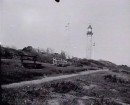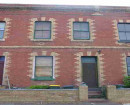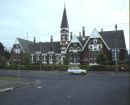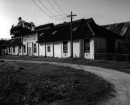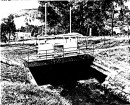NANGEELA HOMESTEAD
1397 CASTERTON-NARACOORTE ROAD, NANGEELA, GLENELG SHIRE
-
Add to tour
You must log in to do that.
-
Share
-
Shortlist place
You must log in to do that.
- Download report
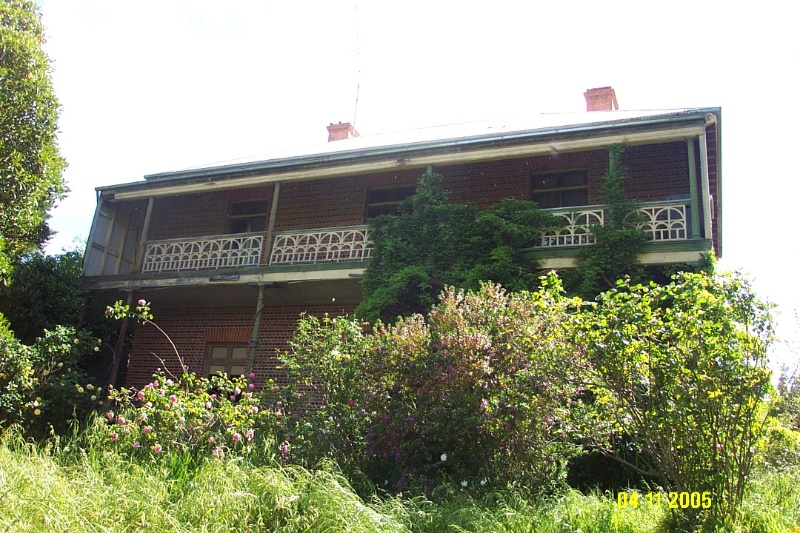

Statement of Significance
Nangeela Homestead is a two-storey symmetrical mansion which originally had a two-storey verandah on three sides. It was reputedly built in the 1860s for William McPherson (1822-1866), pastoralist, and his family. During the early years of the 20th century, the Nangeela Estate was in the control of various groups. It was purchased from the McPhersons in 1920, after the First World War, for soldier settlement. By this time, the property was much reduced in size and comprised only 3,657 acres. Under the administration of the Closer Settlement Board, the estate was subdivided into 15 allotments of from 125 acres to 423 acres. The side wings were removed after the Second World War. The very simply detailed verandah posts are cast iron as is the equally simple balustrading of the first floor. (The simplicity of the balustrade's geometric design and the absence of any cast iron frieze are intriguing, suggesting a later, Edwardian date. It may be that the remnant of the existing verandah is, in fact, the replacement of an earlier verandah.) The verandah structure is presently infested with bees. Apparently the house was built from bricks made on the property. The two-storey form is typical of many homesteads from the 1850s to the 1880s and there are many comparative examples in various materials throughout the state. Nangeela is unusual in the use of banded clinker and red brickwork in English bond to the facade elevation. It is a relatively rare version of dichromatic brickwork and, if it dates from the 1860s, is a relatively early example. This technique is also found in several houses in Birregurra. The side walls are plain red brick with a soldier course of rubbed bricks as window lintels. The simple hipped roof was previously of slate but this has been replaced with corrugated iron. The front entrance is particularly fine with a four-panelled door set within sidelights and a segmental fanlight. The front and side windows of the main rooms are French doors with rectangular fan lights. Of special interest is the complete butler's pantry incorporated into what appears to have been the breakfast room rather than the dining room. Otherwise, the interiors are fine but sturdy in their design with typical detailing to the joinery, plasterwork and slate or stone mantelpieces. This includes some painted panels on the back of what would have been the drawing room door. They depict a picturesque scene with swans. Some ceilings and wall linings have been replaced with pressed metal, another suggestion of major work undertaken in the Edwardian period. The decoration of the rooms in the front wing has been modified in more recent times by wallpapers, carpets, modern paintwork, etc. The hall appears to retain more of its original decoration by retaining polished timber joinery and dark painted walls to picture rail height. The front wing of the house has a higher eaves height than the rear wing which contains the servants' rooms and service areas, parts of which are significantly intact although in very poor condition. The rear verandah appears to have been enclosed in the 1960s. There are some surviving outbuildings and substantial remnants of the original garden, particularly around the house. The building is in poor condition but substantially intact.
How is it Significant?
Nangeela Homestead is of historical and architectural significance to the Glenelg Shire.
Why is it Significant
Nangeela Homestead has historical significance for its association with one of the earliest pastoral runs and, later, Pre-emptive Right properties in Glenelg Shire. It was the home of the McPhersons, Scottish pastoral pioneers from 1860s until 1920, about 60 years. The grand homestead has historical significance as an excellent illustration of the fine but changing lifestyle enjoyed by such Western District families. The property has further historical significance as one of the Soldier Settlement estates established in Glenelg Shire after the First World War. Both the Nangeela Parish and the local Nangeela Township took their names from the historic district property. Nangeela is of architectural significance as a fine and grand example of the typical homestead form.
-
-
NANGEELA HOMESTEAD - Usage/Former Usage
Presently abandoned but recently purchased for use as a residence.
NANGEELA HOMESTEAD - Physical Description 1
Nangeela is a two-storey symmetrical mansion which originally had a two-storey verandah on three sides. The side wings were removed after the Second World War. The very simply detailed verandah posts are cast iron as is the equally simple balustrading of the first floor. (The simplicity of the balustrade's geometric design and the absence of any cast iron frieze are intriguing, suggesting a later, Edwardian date. It may be that the remnant of the existing verandah is, in fact, the replacement of an earlier verandah.) The verandah structure is presently infested with bees. Apparently the house was built from bricks made on the property. The two-storey form is typical of many homesteads from the 1850s to the 1880s and there are many comparative examples in various materials throughout the state. Nangeela is unusual in the use of banded clinker and red brickwork in English bond to the facade elevation. It is a relatively rare version of dichromatic brickwork and, if it dates from the 1860s, is a relatively early example. This technique is also found in several houses in Birregurra. The side walls are plain red brick with a soldier course of rubbed bricks as window lintels. The simple hipped roof was previously of slate but this has been replaced with corrugated iron. The front entrance is particularly fine with a four-panelled door set within sidelights and a segmental fanlight. The front and side windows of the main rooms are French doors with rectangular fan lights. Other windows are typical multi-paned double hung sashes.
Typically the front wing contains the main living rooms on the ground floor and bedrooms on the upper floor. Of special interest is the complete butler's pantry incorporated into what appears to have been the breakfast room rather than the dining room. Otherwise, the interiors are fine but sturdy in their design with typical detailing to the joinery, plasterwork and slate or stone mantelpieces. This includes some painted panels on the back of what would have been the drawing room door. They depict a picturesque scene with swans. Some ceilings and wall linings have been replaced with pressed metal, another suggestion of major work undertaken in the Edwardian period. The decoration of the rooms in the front wing has been modified in more recent times by wallpapers, carpets, modern paintwork, etc. The hall appears to retain more of its original decoration by retaining polished timber joinery and dark painted walls to picture rail height. The front wing of the house has a higher eaves height than the rear wing which contains the servants' rooms and service areas parts of which are significantly intact although in very poor condition. The rear verandah appears to have been enclosed in the 1960s. There are some surviving outbuildings and substantial remnants of the original garden, particularly around the house.NANGEELA HOMESTEAD - Physical Conditions
Fair to poor
NANGEELA HOMESTEAD - Historical Australian Themes
3 Developing local, regional and national economies
3.5 Developing primary production
3.5.1 Grazing stock
3.5.3 Developing agricultural industries
5 Working
5.8 Working on the landNANGEELA HOMESTEAD - Integrity
High degree of integrity
Heritage Study and Grading
Glenelg - Glenelg Shire Heritage Study Part One
Author: Carlotta Kellaway, David Rhodes Mandy Jean
Year: 2002
Grading:Glenelg - Glenelg Heritage Study Stage Two (a)
Author: Heritage Matters
Year: 2006
Grading:
-
-
-
-
-
NANGEELA HOMESTEAD
 Glenelg Shire
Glenelg Shire
-
'CARINYA' LADSONS STORE
 Victorian Heritage Register H0568
Victorian Heritage Register H0568 -
1 Alexander Street
 Yarra City
Yarra City -
1 Botherambo Street
 Yarra City
Yarra City
-
-




